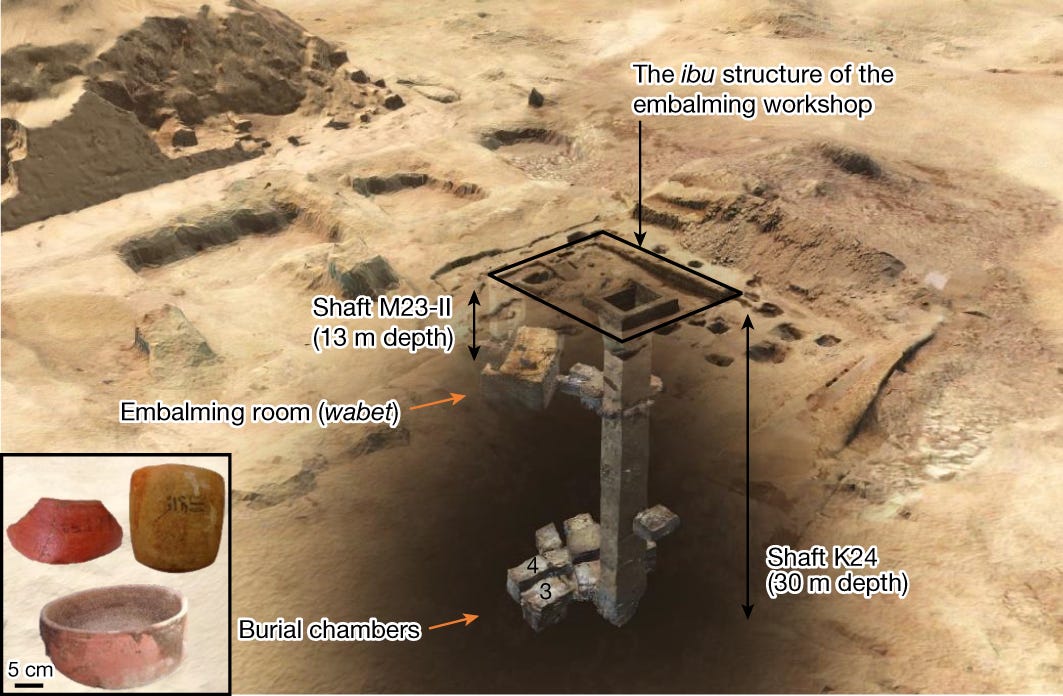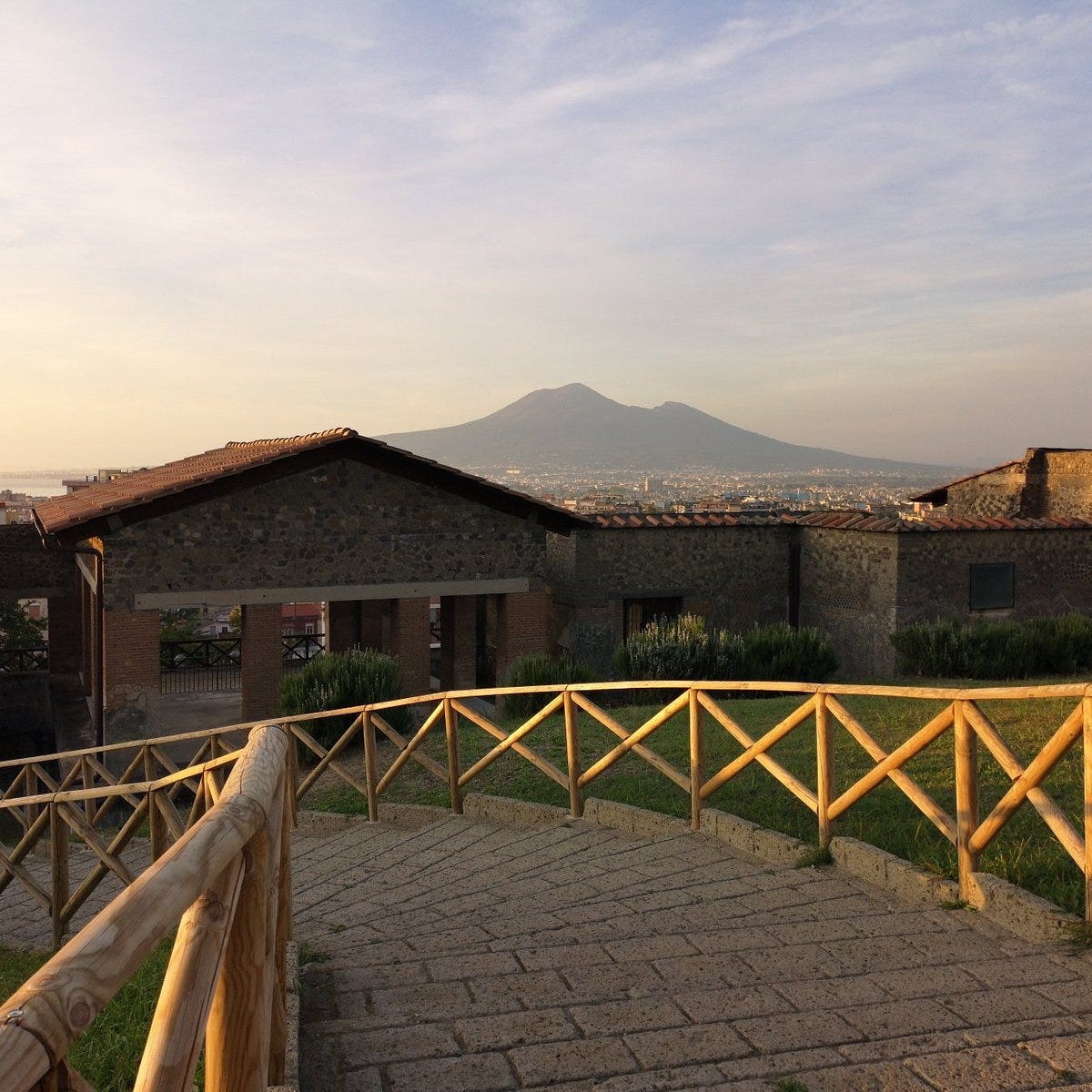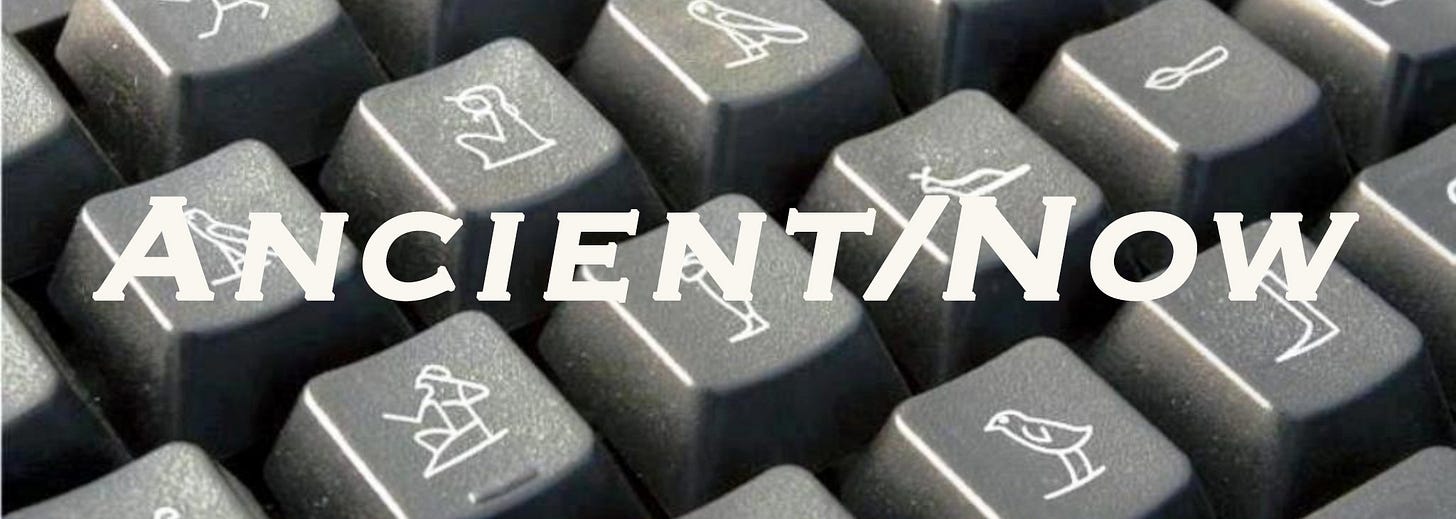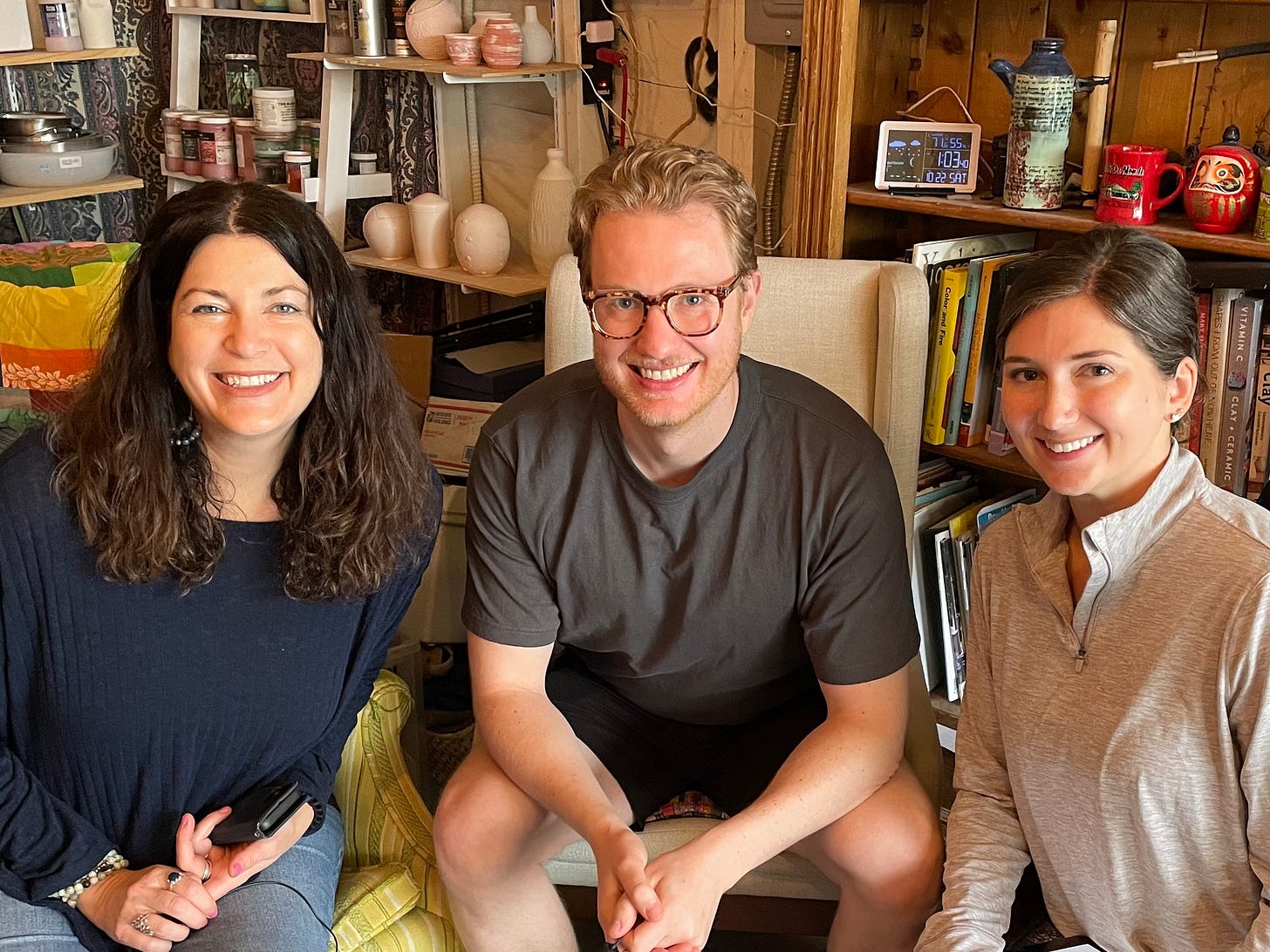Ancient/Now - March 5th
An embalming cache, a golden pendant linked to Henry VIII, a Roman villa's state-of-the-art water system, and more
Hidden corridor discovered in the Great Pyramid
On Thursday the Scan Pyramids project, which has been using non-invasive imaging technology to explore the Great Pyramid at Giza, published an article in Nature announcing it had discovered a “corridor-shaped structure” using cosmic ray muons. This discovery has already generated a lot of discussion in Egyptological circles—more on this breaking story next week!
Discovery of embalming facilities at Saqqara

In a study published this month in Nature researchers shared their biomolecular analysis of residues and traces of substances remaining on pottery vessels from an embalming cache uncovered at Saqqara within the remains of 26th Dynasty (664–525 BCE) embalming facilities. Prior to this discovery our understanding of ancient Egyptian embalming practices came mostly from Herodotus descriptions or Egyptian embalming papyri that recorded some information about the mummification process and organic residue analysis of ancient Egyptian mummies. Remember, the Egyptians excelled in keeping restricted knowledge restricted! Why give away all your best secrets as an embalming specialist and put yourself out of a job?! In addition to providing more information about the infrastructure of an embalming workshop, the cache of pottery vessels provided researchers with numerous samples on which to conduct biomolecular analysis. Their analysis revealed that the vessels contained substances like plant oils and tars (imported petroleum!), resins, and animal fats. The multinational team of researchers concluded that the embalmers working at this site used
…several specific mixtures used for embalming the head or wrapping the body. The mummification specialists seem to have been aware of both the chemical properties and the bioactivity of the substances used and to have obtained complex knowledge about the preparation of different balms of particular ingredients. We identified antiu and sefet as mixtures of different fragrant oils or tars and fats. Antiu should be less restrictively designated—that is, not exclusively as myrrh or incense. Egyptian mummification was built upon and fostered long-distance exchange and routes, including imports from the Mediterranean basin as well as Asian and possibly African rainforest regions.
Just as coffins are social documents (as Kara demonstrates in her work on coffin reuse), mummies can also be seen as social documents that offer us information on ancient Egyptian society. As this study highlights, biomolecular analysis of the substances from the embalming cache speaks to the extensive and far-reaching trade networks of the ancient Egyptians and their understanding of the substances they used in mummification and how they worked to preserve the body of the deceased. Embalming was a social separator. Some people had bodies that were preserved forever; others had bodies that rotted. Such things reified social differences as a kind of prosperity gospel. So let’s decode such rich people things, huh??
Metal detector hobbyist discovers pendant linked to Henry VIII

In 2019 a metal detector hobbyist pacing a field on a friend’s property in Warwickshire, England uncovered a heavy gold pendant linked to Henry VIII and his wife Katherine of Aragon. The ornate symbols on the pendant included Katherine’s symbol of the pomegranate bush and the double-headed Tudor rose as well as the initials H and K (for “Henry” and “Katharine”). Experts, including curator of Renaissance Europe for the British Museum Rachel King, authenticated the 500-year-old pendant but were puzzled as to why the necklace was made—or how it survived, given that after Henry divorced Katherine items connected to her were destroyed. However, the Times reports King’s hypothesis:
It appeared to be hastily crafted, seemingly built more to be seen than to endure, Ms. King said. The chain is small, suggesting someone of a slight stature was meant to wear it. Ms. King said there were no portraits from the period showing men or women wearing jewels of the type, but one thing was for certain: Henry VIII loved to party. One hypothesis holds that it was created for a banquet or as a prize for a jousting tournament; winners could have worn it or melted it down for the gold, she said.
The extraordinary find is the most significant Renaissance era treasure to be discovered in England in the last century. Even better, the hobbyist who recovered the pendent, Mr. Clarke, plans to use his share of the finder’s fee to help pay for his young son’s education. Late capitalism, anyone???
Perfectly preserved, decorated water tank and pipes uncovered in a Roman villa

We think we are so modern and fancy, but a recent article in Archaeology reported on a “state-of-the-art water system” uncovered during re-excavations in one of the small peristyles at the 27,000 square-foot Villa Arianna in Pompeii. With lush gardens, pools, baths, and multiple fountains, having running water was a must for these luxurious Roman estates. The Romans are well-known for their engineering skills, especially their ability to move water, so this find is remarkable more for its excellent state of preservation—thanks to the famous eruption of Mt. Vesuvius in 79 CE that froze the city of Pompeii at a moment in time—than what it reveals about Roman technology.
The ability to secure water was linked to wealth and status; only the 1% got to have these lead pipes in their homes. We will eventually face similar issues here in California with the ongoing water crisis—as the precious resource becomes increasingly scarce, we should expect socio-economic status to play a role in determining who gets access to it.
New episodes from Afterlives of Ancient Egypt
Our latest episodes of Afterlives of Ancient Egypt include a thought-provoking discussion on kingship, sovereignty and globalism with friend and colleague Dr. Jonathan Winnerman (we love Jonathan!!) and a wide-ranging Q&A with our patrons on the theme of ancient Egyptian gods and goddesses.








